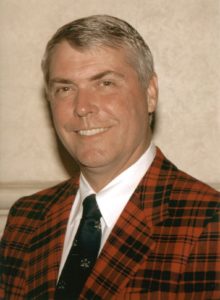post
Clyde Johnston Reflects on Oak Point Golf Course at 30

In 2019, Oak Point Golf Course celebrated 30 years. The course marked the occasion in fine fashion by being being awarded Golf Course of the Year by Charleston Golf Course Owners Association, an affiliate of the National Golf Course Owners Association. Course architect Clyde Johnston shares his thoughts on the past, present and future of Oak Point.
What was your reaction when you learned the CGCOA bestowed Course of the Year honors on Oak Point?
Clyde Johnston: I was delighted because it is a great honor both for the resort and for me. Kiawah Island Golf Resort does a great job maintaining the course, and I’m proud to have been included with the design.
The award had to have been even more meaningful with Oak Point turning 30 this year. Does the course have a special place in your heart?
CJ: Oak Point was originally Hope Plantation Golf Club when I designed it. It was one of the first contracts I got when I went out on my own. So that makes it special as well. Also, I met my wife there. She was working for the developer, and I eventually asked her out on a date. We just celebrated our 27th wedding anniversary.
What were some of the notable challenges you faced when you first encountered the site?
CJ: The residential portion of the site and the golf course were being developed together, so I couldn’t just create a golf course without taking into account the constraints of the residential component. It worked out well because I was also actually designing the lots, so there was no conflict between the two.
You describe the design of Oak Point as a “Scottish-American” course. What do you mean by that?
CJ: I’d just made my first trip to Scotland two or three years before, and like Pete Dye after his first trip there, the courses deeply impressed me. They were so different than what I’d grown accustomed to playing in America. Scottish courses tend to be very open, without trees or other tall vegetation. So that was very similar to what I had to work with on the front of Oak Point, so I integrated some design principles I observed over there — open, bumpy fairways, pot bunkers and greens that roll off the edges. Then the back of the course is different as it is heavily wooded — needless to say, you don’t often see that on Scottish courses. So the front of the course is the “Scottish” and the back part is the “American” in character.
It’s like asking the choose your favorite child, but what do you consider the signature hole of the course?
CJ: I guess I have to say 18. That view down the fairway along the marsh with the river in the background is hard to beat. What’s interesting is the original owner didn’t want to put a hole along the marsh, but I felt very strongly about it and talked him into it. I’m glad he changed his mind.